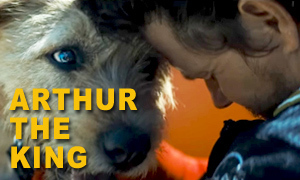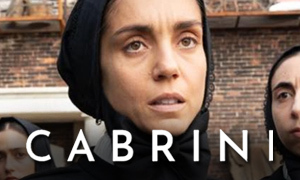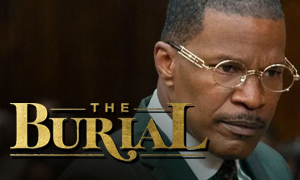Is "King Arthur: Legend of the Sword" a True Story? Not Exactly
Was King Arthur a real person?
"We don't have any contemporary evidence for King Arthur as a historical figure," says historian Chris Snyder of Marymount College. "He may have existed. He certainly existed in the minds of the Britons as a figurehead for their resistance against the Saxons." The Germanic tribes known as the Saxons pressed into the island of Britain from the east, and according to medieval legend, a dynamic prince named Arthur led British forces against the Saxons in the late 5th and early 6th centuries AD. -History.com
When did the legend of King Arthur first appear in history?
King Arthur first appeared in the writings of the Welsh cleric Nennius, who listed 12 battles that Arthur had supposedly fought in. They stemmed largely from Welsh poetry. In looking closer at the times and locations of the battles, it would have been impossible for one man to have fought in them all, and the general reliability of Nennius' writings have recently been called into question. Subsequent Welsh and Breton tales of King Arthur portrayed him as a heroic warrior who battled both human and supernatural enemies. Some of these details certainly call into question the legend of King Arthur as a true story. "Arthur is a myth for all times, a message for all times, but also and myth and a message particularly for the Britons in this dark period of their history," says Michael Jones of Bates College. -History.com
Are The Mage and Guinevere the same person?
If you're wondering if Astrid Bergès-Frisbey's character The Mage is Guinevere or an entirely separate character, then you're not alone. Plenty of others have asked that question too. The Mage essentially translates into "the magician." The character is not a Merlin-esque version of Guinevere, but is rather an entirely separate character. "There are so many characters," says director Guy Ritchie of the legend. "We hardly touch on Merlin, we don't touch on Guinevere, we don't really deal with the peripheral knights" (South China Morning Post). The lack of Guinevere in the movie is partly due to the fact that the film focuses on the time period prior to when Arthur becomes king (there are plans for five more films if Legend of the Sword does well). The Mage herself is an integral part of Arthur's fight in the movie. She has the psychic ability to control animals and helps Arthur to realize his true power.
Was Londinium a real city in Britain?
Yes. Londinium is a settlement that was established in Britain around 43 AD on part of the area that now makes up the City of London. At the time of King Arthur's supposed existence in the late 5th century, the settlement had fallen into ruin and was largely uninhabited. This was in part due to raiding by Saxon invaders, who King Arthur led British forces against.
When did the modern telling of King Arthur first appear, including his magical sword Excalibur, wife Guinevere, and wizard Merlin?
King Arthur as we know him today is mainly drawn from Geoffrey of Monmouth's pseudohistorical 12th-century book Historia Regum Britanniae (History of the Kings of Britain), in which he wrote the first life story of Arthur. Combining myth and fact in a tantalizing way, the Welsh cleric described Arthur's magic sword Caliburn (later renamed Excalibur), Queen Guinevere, the wizard Merlin, and the loyal knight Lancelot. It is unknown how much of Manmouth's book was invented by him and how much he drew from earlier folktales, which themselves have been debated with regard to historical significance. Many of these tales had been circulated orally for some 700 years, so if an actual Arthur did exist, there was a lot of time for his true story to become misconstrued and exaggerated. In 1155, Wace's Norman language adaptation of Manmouth's book included King Arthur's court, the Knights of the Round Table. Wace did not take credit for creating the Round Table but rather attributed it to earlier Breton writings, a claim that has been debated.
Is the villainous King Vortigern, portrayed by Jude Law, based on a real person?
The existence of the evil King Vortigern is almost as equally contested as Arthur's existence. In the movie, he kills Arthur's parents to take the throne when Arthur is a small child. This is invention and is not part of Geoffrey of Monmouth's The History of the Kings of Britain, which is considered to contain the most well-known story of Vortigern. In earlier writings, Vortigern is mentioned as possibly being a 5th-century Briton warlord. However, as with Arthur, scholars have debated the details of those writings. It has even been suggested that Vortigern might be a title instead of a name, since in Brittonic Vortigern means "Great King" or "Overlord". However, the latter part of the name includes the element *tigerno, which was a regularly occurring element in Brittonic personal names.
Did castles really exist at the time when King Arthur supposedly lived?
No. Castles did not appear in Britain until some 500 years after King Arthur. He was a Briton, a Celtic who would have lived a much simpler, less-refined warrior lifestyle. As a Dark Age king, his appearance would have likely been more gruff. Unlike in the King Arthur: Legend of the Sword movie (and virtually every other King Arthur movie), no one would have had shiny armor because shiny armor didn't exist in the 5th century AD. -King Arthur Documentary
So how much of King Arthur: Legend of the Sword is based on a true story?
Likely very little. Given that early texts that mention Arthur have been called into question with regard to their historical accuracy, including Nennius' Historia Brittonum, there will likely never be a way of knowing if King Arthur was a real person or a fictional hero whose reputation spread via folklore. Historians land on both sides of the debate. What is much clearer is that other elements of the story, like the wizard Merlin, Arthur's sword Excalibur, wife Guinevere, and his Knights of the Round Table, are almost entirely fictional and appear together in Geoffrey of Monmouth's c. 1136 AD chronicle The History of the Kings of Britain or its later adaptations. Monmouth's fantastical work is not regarded as being a true story and historians give it no value as history. As for other exaggerated and fantasy-based elements of the movie, like the giant mammoths, squid-human hybrids, and the supernatural abilities of the characters, these details were included to give the film more of a Lord of the Rings feel.
So when you're watching King Arthur: Legend of the Sword, enjoy the movie but take what you see with a grain of salt, and even that grain is probably mostly fiction.
King Arthur Documentary & Legend of the Sword Trailer
Watch a King Arthur documentary that explores the myth about the legendary British hero, including whether he was a real person, then view the King Arthur: Legend of the Sword trailer.
Link-to-Learn More:







